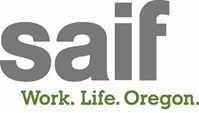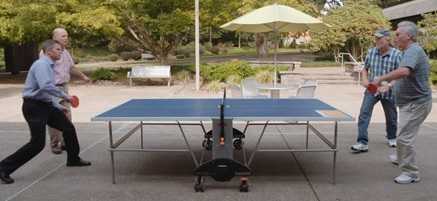Total Worker Health in Action!

In this issue:
- Managers’ Buzz
- Total Worker Health Exclusive
- Updates from the NIOSH Office for Total Worker Health
- Updates from the NIOSH National Center for Productive Aging and Work
- Spotlight on NIOSH Fundamentals of Total Worker Health Approaches
- Updates from the NIOSH Centers of Excellence for Total Worker Health
- New Publications and Resources
- Conferences, Webinars, and Trainings
Advancing worker safety, health, and well-being
Volume 6 Number 2 July 2017
Managers’ Buzz
Anita L. Schill, PhD, MA, MPH, and L. Casey Chosewood, MD, MPH

Over halfway through 2017, we are thinking about what has already been accomplished this year to move the concept of Total Worker Health forward, as well as what’s to come in the months ahead. Representatives from the Office for Total Worker Health and from our NIOSH Centers of Excellence for Total Worker Health participated in the recent Work, Stress, and Health conference and the NORA State of the Science Meeting. Each of these events provided an opportunity to share TWH concepts with researchers and practitioners committed to improving worker safety, health, and well-being. They also provided valuable insight into topics and areas of interest for our own upcoming 2nd International Symposium to Advance Total Worker Health, happening May 8–11, 2018, at the NIH Natcher Center in Bethesda, MD. We hope you’ll join us and contribute to the symposium by submitting an abstract. Learn more about topics for the symposium in Updates from the Office for TWH.
The University of Iowa hosted a Research Methodology Workshop for TWH guiding our efforts to strengthen the quality and consistency of TWH research. Workshop initiatives will address gaps in TWH research as well as advance TWH science and practice. Training the future leaders in TWH is no small feat, and another TWH-focused event is aiming to do just that. A Training and Education Roundtable will occur this fall at The University of North Carolina at Chapel Hill, with the goal of developing a curriculum for and training future TWH workforce professionals. Read more about these key events in Updates from the Office for TWH and the TWH Exclusive.
We invite you to stay up-to-date on the latest Total Worker Health news, research, events, and more by joining the conversation on Twitter (@NIOSH_TWH), on the NIOSH Total Worker Health LinkedIn Group, or by email at twh@cdc.gov.
Total Worker Health Exclusive
New alliance in Oregon aims to promote TWH statewide

Representatives from SAIF Corporation, Oregon OSHA, and the Oregon Institute of Occupational Health Sciences at Oregon Health and Sciences University sign the agreement for a new joint alliance to expand the knowledge and application of TWH principles by leveraging the strengths of each organization. From left: Chuck Easterly, Director, Safe and Healthy Workplace Center at SAIF Corporation; Michael Wood, Administrator, Oregon OSHA Department of Consumer and Business Services; Steven Shea, PhD, Director, Oregon Institute of Occupational Health Sciences at Oregon Health and Sciences University.
Chia-Chia Chang, MBA, Public Health Analyst and Partnership Development Lead, NIOSH Office for TWH
The Office for Total Worker Health appreciates all the partners we have that help advance worker safety, health, and well-being. Our partners are invaluable in conducting research, translating research, and building capacity in TWH. In addition to these collaborations, we also encourage networking among stakeholder organizations to leverage resources and strengths, foster synergy, and share lessons learned and promising practices. We are delighted about a new alliance developed among our partners in Oregon to advance TWH. Earlier this month, the following organizations signed an agreement to work together to improve the safety, health, and well-being of Oregon workers:
- Oregon Institute of Occupational Health Sciences at Oregon Health & Sciences University, which houses the Oregon Healthy Workforce Center (OHWC), one of six Centers of Excellence for TWH, and has a mission to promote health and prevent disease and disability among working Oregonians;
- SAIF, a NIOSH TWH Affiliate and a not-for-profit, state-chartered workers’ compensation company which issues more than half of the policies in the state and strives to make Oregon the safest and healthiest place to work; and
- Oregon Occupational Safety and Health Administration (OSHA), within the Oregon Department of Consumer and Business Services (DCBS), which enforces the state’s occupational safety and health regulations and works to improve workplace safety and health for all Oregon workers.
The alliance aims to advocate for a broader approach to worker well-being beyond the workplace. The three organizations will collaborate to provide expertise, guidance, training, and education to prevent and reduce exposures and protect Oregon’s workers. The alliance will also develop knowledge to help workers understand their rights and employers’ responsibilities. The organizations will use data to identify exposures and priority areas for education and outreach activities. An objective of the alliance is to provide expertise to develop resources for recognizing and preventing industry-specific workplace hazards and for communications to employers and workers. Another objective is to participate in or convene meetings on Total Worker Health to promote Total Worker Health principles, help forge innovative solutions, publicize the benefits of occupational safety and health programs, and share best practices. The alliance will also promote and encourage participation in Oregon OSHA’s cooperative programs such as the Safety and Health Achievement Program (SHARP) and the Voluntary Protection Program. Finally, the organizations will develop a task force to share information on activities and results in achieving alliance goals.
The alliance will leverage the strengths of each organization, emphasize evidence-based practices and help employers invest in such approaches, and encourage strategies that recognize the role of the work environment in supporting worker safety, health, and well-being. The first of its kind nationwide, the alliance will expand the knowledge and application of TWH principles, and we hope it will lead to other such partnerships across the country!
Learn more about the NIOSH Centers of Excellence for TWH and NIOSH TWH Affiliates. For more information on the alliance and its members, visit SAIF.com/TWH, Oregon OSHA, and OHSU’s Oregon Healthy Workforce Center.
Updates from the NIOSH Office for Total Worker Health
Graduate Certificates in TWH
The Office for TWH wants to highlight new graduate certificate programs at the University of Northern Kentucky, University of Colorado, and Western Kentucky University. These universities, two already members of our NIOSH Total Worker Health Affiliates program and one a NIOSH Center of Excellence for TWH, have taken a significant step toward increasing the number of professionals trained in TWH approaches. The new graduate certificate in TWH at Northern Kentucky University emphasizes the practical application of scientific findings to different workplace settings in order to improve employee and organizational health and well-being. University of Colorado’s graduate certificate in TWH is designed to prepare public health professionals to assess workplace design and develop strategies focused on evidence-based policies and practices. At Western Kentucky University, the new graduate certificate in Advanced Worksite Health Promotion combines health education, program planning, communication, and health and safety to provide a comprehensive skill base for assessment, planning, implementation, and evaluation of health promotion programs in a work environment. Training programs like these across the country enable partners to continue expanding the reach of TWH, with the ultimate goal of advancing worker safety, health, and well-being.



Updates from the NIOSH National Center for Productive Aging and Work (NCPAW)
On January 27, the National Center for Productive Aging and Work (NCPAW), in collaboration with the Canadian Institute for the Relief of Pain and Disability (CIRPD), conducted the webinar Productive Aging and Work: A Framework for Developing Age-Friendly Workplaces. The webinar, through lecture and case studies, discussed the concept of productive aging and presented evidence-based methods for facilitating an age-friendly workplace. The presentation offered tools and strategies that encourage a culture of safety and health that facilitates intergenerational collaboration and support. A recorded version of the webinar and PowerPoint slides of the presentation are available here. Also, for additional information on productive aging and work, be sure to check out this NCPAW and TWH webinar: Productive Aging and Work: Theory, Health Data, and Practical Solutions.
Promising Practices for Total Worker Health
Sharon Overton, SAIF Corporation
From PPE to ping-pong: How an Oregon workers’ compensation company leads the way to safer, healthier work

When you think about dangerous jobs, you might think about commercial fishermen, loggers, and airline pilots. Insurance company employees or call center workers? Not so much.
But just because workers sit at a desk all day, it doesn’t mean they’re not at risk of getting hurt. That’s the ah-ha moment Deb Fell-Carlson experienced in 2007 while attending a conference that provided an early glimpse at what later would be known as Total Worker Health®. Fell-Carlson is the Total Worker Health adviser for SAIF, Oregon’s state-chartered, not-for-profit workers’ compensation company.
In 2015, SAIF became the 11th organization nationwide, and the first insurance provider, to be named a NIOSH Total Worker Health Affiliate. While some might view adding health improvement to safety consulting as a stretch for a workers’ comp company, SAIF sees it as consistent with its mission to make Oregon the safest and healthiest state. The 100-year-old company insures more than half of all Oregon employers and has built long-standing relationships based on helping businesses improve safety and reduce costs. Many of those same employers are now looking to SAIF for ways to take injury prevention to the next level by boosting employee well-being and lowering health risks, Fell-Carlson says. “We’re in a position to set them up for success.”
Leading by example
When it comes to safe and healthy workplaces, SAIF leads by example. Over 900 SAIF employees and their families have access to free onsite health care on the Salem campus, resulting in earlier detection and better follow-up care, says Human Resources Manager Renae Coombs, who has led SAIF’s internal well-being program since 2006. SAIF recently hired a dedicated safety and well-being coordinator.
SAIF leadership encourages supervisors to work collaboratively with employees to organize work in a way that optimizes employee well-being and work-life balance. The company offers flexible scheduling and telecommuting because leadership recognizes that autonomy, trust, and flexibility help reduce stress and improve productivity. New employees get an ergonomic assessment, and any employee can request an assessment at any time. Mandatory Safety In Motion® training teaches ergonomic skills that employees can use to be safer at work and at home. An active safety committee identifies hazards, analyzes injuries, and makes recommendations.
Nearly 100% of SAIF employees participate in an annual biometric screening, along with their spouses and domestic partners. A popular pedometer program rewards employees who adopt healthy habits with a low-cost medical plan and up to $400 a year in cash.

SAIF Corporation workers engage in stress-reducing social activities like playing ping-pong. This is just one aspect of SAIF's commitment to worker safety, health, and well-being for their own workforce.
Clearing the air
SAIF’s investment in employee well-being appears to be paying off. Employees are walking more, taking breaks away from their desks, and engaging in stress-reducing social activities such as ping-pong competitions and indoor nerf basketball tournaments.
Fell-Carlson traces the company’s health and safety journey to 1988 (years before she was hired), when SAIF first banned smoking at desks—except in private offices. Others were free to puff away in ventilated smoking rooms that leaked second-hand smoke into the adjoining hallways. The Salem buildings and grounds went tobacco-free in 2008. In the 1990s, SAIF began offering discounted gym memberships, free onsite exercise classes, and maps of local walking routes. More recently, the company has also sponsored employee events and fairs with local vendors and activities that promote health and prevent injury.
Breaking down barriers
One of the challenges is helping employers see the return on investment for Total Worker Health. Fell-Carlson points to presenteeism—or lack of focus on the job in relation to health issues—as an important factor affecting workplace productivity and injuries. Workers who are less alert are more likely to get hurt. Studies show that investing in strategies to improve worker safety and health—on and off the job—pays dividends in the form of increased productivity and engagement, plus lower health care and workers’ comp costs. Other motivations include recruiting and retaining top talent, greater job satisfaction, and contributing to healthy communities.
Another potential obstacle is a conventional belief that employers are responsible for workplace safety, but wellness is a “personal thing.” Deb and her team help employers achieve success through changes to the work environment, management and work practices, and overall safety culture, in addition to providing information and support to employers for individual employees. SAIF is helping companies break down barriers and create a culture shift that supports safe and healthy behaviors—at work and at home. Interventions are aimed at six key areas: nutrition, hydration, movement, chronic stress reduction, quality sleep and fatigue management, and nicotine prevention/addiction recovery. SAIF provides a variety of tools to help employers support employees’ health improvement, including videos, posters, and other simple, low-cost ideas.
More than wellness
Fell-Carlson is quick to point out that wellness programs can’t replace basic safety and health protections, and pedometers and ping-pong aren’t a substitute for hazard controls and an engaged safety committee. An employer with a health improvement program that has not fully developed their injury prevention systems is not yet a Total Worker Health employer. By the same token, SAIF is not getting into the health care business. While the workers’ comp company will continue to embrace health improvement as an important strategy for injury prevention, “you won’t see safety management consultants taking blood pressures or providing diabetes education to employees”, says Fell-Carlson.
What you will see is a company committed to the principles of Total Worker Health as an important part of its mission to make workplaces safer—and healthier—for its employees, its customers, and the state of Oregon.
*Quarterly, we feature new Promising Practices for Total Worker Health, which are examples of how employers across the country and from a wide range of industries are taking steps to effectively integrate workplace policies, programs, and practices that protect workers’ safety and health and advance their overall well-being. If your organization is proactively exploring opportunities to accomplish these goals by targeting the conditions of work, please email us at twh@cdc.gov. Your employer’s efforts could be featured in Promising Practices for Total Worker Health!
Updates from the NIOSH Centers of Excellence for Total Worker Health
University of Iowa Healthier Workforce Center of the Midwest (HWCMW)
The Healthier Workforce Center of the Midwest hosted the Total Worker Health® Research Methodology Workshop in Iowa City on March 7th and 8th. This workshop responded to recommendations put forth by the Independent Panel of the Pathways to Prevention (P2P) workshop, Total Worker Health: What’s Work Got to Do With It? (National Institutes of Health 2015) and addressed several goals in the National Total Worker Health Agenda. Stay connected to HWCMW on Twitter and through Facebook.
Oregon Healthy Workforce Center (OHWC)
As part of an ongoing strategy to improve the Total Worker Health of the Oregon workforce through active collaboration, a new alliance has been formed in the state. The Department of Consumer and Business Services, Oregon OSHA, Oregon Institute of Occupational Health Sciences (home of OHWC at Oregon Health & Science University), and SAIF Corporation (Total Worker Health affiliate) have come together to expand the knowledge and application of Total Worker Health® principles through the unique contributions of each collaborator. Read more on the new alliance in this issue’s TWH Exclusive.
OHWC was selected to receive the Safety and Health Advocate (Team) Award by the Oregon Governor’s Occupational Safety and Health Conference, where OHWC presented and hosted an exhibit booth. The biannual OHWC Symposium, Creating a Positive Work Environment for Safety and Health, will be held May 11th in Wilsonville, Oregon. Several members of the OHWC will be presenting at the Work, Stress, and Health conference this June in Minnesota; topics will range from research updates to dissemination efforts. Finally, learn more about OHWC on the YouTube channel; visit the blog, Oregon and the Workplace; use resources in the Toolkit Kiosk; and get regular updates via Twitter.
News from our TWH Affiliates and Partners
National Security Agency (NSA)
NIOSH TWH Affiliate
The NIOSH Office for TWH is pleased to announce a new NIOSH TWH Affiliate. The National Security Agency (NSA) is both a member of the Defense Department and an Intelligence Community agency that fosters an integrated approach to protecting and promoting worker well-being. NSA/Central Security Service (CSS)/United States Cyber Command (USSCYBERCOM) has emphasized the importance of health to its employees and military assignees since 1955, when a fully staffed Medical Center was established. Over the years, NSA/CSS/USCYBERCOM has added additional professional health staff that includes industrial hygienists, food scientists, environmental engineers, clinical psychologists, clinical social workers, clinical counselors, fitness specialists, and work-life specialists. In 2012, senior leadership established the Corporate Wellness Network (CWN) in order to engage a culture of wellness that includes all seven dimensions of wellness: physical, emotional, mental, spiritual (sense of purpose), social, occupational, and financial. NSA cares about people and its important mission. NSA’s goals are to maintain a healthy, trustworthy and productive workforce and a safe and environmentally sound workplace.
American Association of Occupational Health Nurses (AAOHN)
NIOSH TWH Affiliate
The AAOHN Global Summit and National Conference takes place April 23rd through 27th in New Orleans, Louisiana. NIOSH TWH Affiliates, NIOSH Centers of Excellence for TWH, and Promising Practices organizations will give pre-conference and concurrent session presentations.
About the NIOSH TWH Affiliate Program
The mission of the NIOSH Total Worker Health Affiliate Program is to foster an integrated approach to protecting and promoting worker well-being through collaborations with academic, labor, nonprofit, and government organizations. Learn more about the NIOSH TWH Affiliate Program here.
New Publications and Resources
Using Total Worker Health® Concepts to Reduce the Health Risks from Sedentary Work. This new NIOSH Workplace Solutions document describes organizational practices that can reduce the health risks associated with sedentary work.
Three New Publications from Centers of Excellence for Total Worker Health
Obscured by administrative data? Racial disparities in occupational injury. Researchers at the Harvard T.H. Chan School of Public Health Center for Work, Health, and Well-being investigated racial and ethnic differences in injury report patterns in self-reported versus administratively reported workplace injuries in the same group of healthcare workers. Results show that undercounts of administratively reported injuries in black workers may lead to underestimates of racial disparities in workplace injuries.
Measurement tools for integrated worker health protection and promotion: Lessons learned from the SafeWell project. This paper from the Harvard T.H. Chan School of Public Health Center for Work, Health, and Well-being presents a conceptual model, measurement tools, data collection processes, feedback reports, and initial test results of a measurement approach assessing health protection and health promotion. The assessment, designed to address knowledge gaps, was fielded in a study called SafeWell.
The moderating effects of perceived organizational support on the relationship between organizational justice and objective measures of cardiovascular health. Researchers at OHWC explored the relationship between cardiovascular measures (heart rate, diastolic blood pressure, and systolic blood pressure) and workers’ perceptions of fairness in their organization. Results indicate that both procedural justice and perceived organizational support are necessary for decreased heart rate and systolic and diastolic blood pressure.
Conferences, Webinars, and Trainings
March
7th and 8th—University of Iowa hosted an invitation-only Total Worker Health Research Methodology Workshop in Iowa City, Iowa.
20th—Cassandra Okechukwu, ScD, MSN of the Harvard T.H. Chan School of Public Health Center for Work, Health, and Well-being, presented “Making the Business Case for Total Worker Health® for Low Wage Workers: A Path Forward” at the Harvard T.H. Chan School of Public Health.
April
12th— Dr. L. Casey Chosewood will deliver the keynote address at the 2017 Colorado Culture of Health Conference in Denver, Colorado.
23rd—Dr. L. Casey Chosewood will present as part of a panel titled “Occupational and Personal Risk Factors in Illness and Injury” with NIOSH colleagues at ACOEM’s American Occupational Health Conference in Denver, Colorado.
May
4th—Dr. L. Casey Chosewood will deliver the Annual Lecture for the University of Rochester’s Occupational and Environmental Medicine Grand Rounds in Rochester, New York.
4th—Diane Rohlman, MA, PhD, of the HWCMW, will deliver the keynote address at the St. Louis Area Business Health Coalition 2017 Spring Forum, in St. Louis, Missouri. The address is titled “Total Worker Health: Missing Pieces to the Employee Well-being Puzzle”.
11th—OHWC will host its Spring Symposium, “Creating a Positive Work Environment for Safety and Health,” in Wilsonville, Oregon. Learn more and register for the event on its webpage.
18th—Bradley Evanoff, MD, MPH, of the HWCMW, will speak at the American Cancer Society Corporate Wellness Forum in St. Louis, Missouri.
June
7th to 10th—The Work, Stress, and Health 2017 international conference, in Minneapolis, Minnesota, is co-convened by NIOSH, the American Psychological Association Public Interest Directorate, and the Society for Occupational Health Psychology. Researchers from NIOSH and the NIOSH Centers of Excellence for Total Worker Health will participate in various presentations and sessions.
7th to 10th—Michael Grant, of the Harvard T.H. Chan School of Public Health Center for Work, Health, and Well-being, will present at the American Industrial Hygiene Conference and Expo in Seattle, Washington. His presentation is entitled “Preliminary Results, Challenges, and Successes of Implementing a Comprehensive Ergonomics and Wellness Total Worker Health® Intervention on Commercial Construction Sites.”
21st and 22nd—NIOSH will launch the 3rd Decade of the National Occupational Research Agenda at its Expanding Research Partnerships: State of the Science Conference in Denver, Colorado.
SAVE THE DATE
October 25–27, 2017—The Understanding Small Enterprises Conference will take place in Denver, Colorado. Conference topics include the links between worker well-being and business health; contingent and vulnerable workers; and the interactions of partners with small businesses.
May 8–11, 2018—The 2nd International Symposium to Advance Total Worker Health® returns to the campus of the National Institutes of Health in Bethesda, Maryland. This is the only NIOSH-sponsored conference dedicated solely to advancing Total Worker Health research and practice. Esteemed presenters from nonprofit, government, private, and academic institutions are expected to share their perspectives and research findings on Total Worker Health, as well as practical applications.
Contributors
Editorial Board
- L. Casey Chosewood, MD, MPH, Executive Editor
- Anita L. Schill, PhD, MA, MPH, Executive Editor
- CDR Heidi Hudson, MPH, Editor-in-Chief
- Reid Richards, Managing Editor
- Seleen Collins, Copy Editor
- Tonya White, NIOSH Web Editor
- Steve Leonard, NIOSH Web Publisher
Please send your comments and suggestions to us at twh@cdc.gov.
This newsletter is published quarterly via email by the National Institute for Occupational Safety and Health Total Worker Health® Program to inform members of the public health community as well as interested members of the general public of program-related news, new publications, and updates on existing activities and initiatives.
Get Email Updates
To sign up to receive the TWH Newsletter, enter your email address:
- Page last reviewed: March 28, 2017
- Page last updated: March 28, 2017
- Content source:
- National Institute for Occupational Safety and Health Office of the Director
TOTAL WORKER HEALTH ® is a registered trademark of the US Department of Health and Human Services


 ShareCompartir
ShareCompartir
